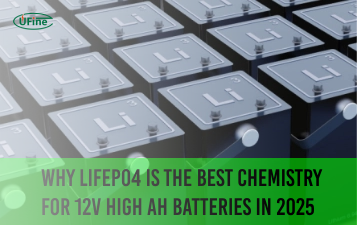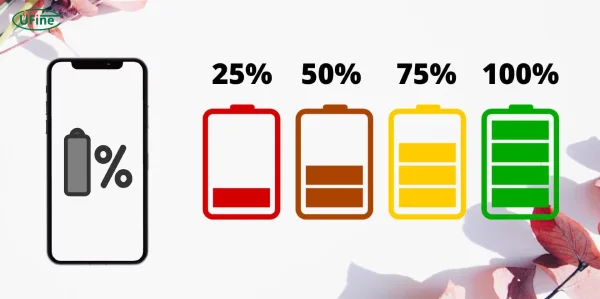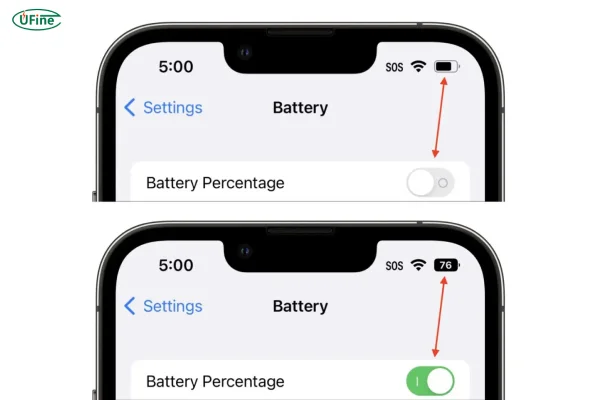Let’s be honest—most of us live by that tiny number at the top of our screens. Whether it’s your phone, laptop, smartwatch, or electric vehicle, battery percentage tells you how much power is left before it dies on you. But have you ever wondered… how does your device know that it’s at 62%?
It seems like a simple number, but it’s really not. That battery percentage is the product of careful design, engineering, chemistry, and constant estimation. It’s not just a power gauge—it’s an intelligent guess. And sometimes, it’s wrong.
In this article, we’ll uncover what battery percentage really means, how it’s calculated, and why it matters more than you might think.
Part 1. Understanding battery basics
To understand battery percentage, we need to first understand what’s inside your battery.
Every battery has a capacity, typically measured in mAh (milliamp-hours) or Wh (watt-hours). This tells you how much energy it can hold.
Next, there’s voltage, which drops gradually as the battery discharges. But—and this is important—the relationship between voltage and remaining charge is non-linear. So a drop in voltage doesn’t always mean a proportional drop in energy.
Also, not all batteries are created equal. Common types include:
- Li-ion (Lithium-ion): Found in most phones and laptops. High energy density but sensitive to overcharging.
- LiPo (Lithium Polymer): Used in slim or flexible electronics.
- LiFePO4 (Lithium Iron Phosphate): Safer and more stable, but harder to measure accurately.
Each type behaves differently, and that affects how battery percentage is calculated.
Part 2. What does battery percentage actually represent?
The battery percentage on your screen is not a fuel gauge. Instead, it’s an estimate of the State of Charge (SoC). This is the ratio of the remaining charge to the full capacity.
So, if a battery can store 4,000mAh, and it currently has 2,000mAh, that would theoretically mean 50%. But again, it’s more complicated than just math.
Why? Because factors like battery aging, voltage curve, usage, temperature, and calibration all affect what 50% really means. It’s not a simple truth—it’s a dynamic estimate.
Part 3. Voltage-based estimation
One of the earliest and simplest ways to estimate battery percentage is using open-circuit voltage (OCV). This is the battery’s voltage when it’s not actively charging or discharging.
Each battery type has a unique voltage curve. For instance, a lithium-ion battery may follow this pattern:
- 4.2V = 100%
- 3.7V = ~50%
- 3.0V = ~0%
But here’s the problem: voltage is affected by temperature, current load, and battery health. So even if two batteries are at the same voltage, one might be full and another nearly empty due to age or internal resistance.
That’s why voltage-based estimation alone often leads to inaccuracies.
Part 4. Coulomb counting method
Next, we have coulomb counting. This is a more modern approach used in smart batteries.
Coulomb counting works by tracking the current that flows in and out of the battery. Think of it like monitoring your bank account: every charge is a deposit, every discharge is a withdrawal.
It offers more precision—but it comes with challenges:
- It must be perfectly calibrated at the start.
- Tiny errors over time cause drift.
- It doesn’t account for self-discharge when the battery isn’t in use.
Still, it’s widely used in devices like smartphones and laptops because of its ability to adapt to real-world usage.
Part 5. Hybrid methods: combining voltage and coulomb counting
Today, most advanced devices combine voltage-based estimation and coulomb counting to get a better reading.
This hybrid method is more resilient. If one system goes slightly off (say, due to temperature), the other can compensate. Over time, your device “learns” your usage patterns and adjusts the way it calculates battery percentage.
Moreover, the algorithm may also factor in:
- Temperature data
- Charging speed
- Historical usage patterns
This is why, after a few weeks, your new phone might suddenly become more accurate in predicting battery life.
Part 6. The role of the battery management system (BMS)
The real hero behind battery percentage accuracy is the Battery Management System (BMS).
The BMS monitors:
- Voltage across each cell
- Current flow
- Internal temperature
- Cycle count
- Remaining charge and energy
It constantly updates the battery percentage based on all these factors. In smart devices, the BMS communicates with software (like iOS or Windows) to show you the number you see on your screen.
But more importantly, the BMS protects the battery. It prevents overcharging, cuts off unsafe discharges, and helps extend the battery’s lifespan.
Part 7. Battery chemistry and its impact on accuracy
Different battery chemistries make things harder—or easier.
For example, LiFePO4 batteries are incredibly stable and safe. But they have an unusually flat voltage curve. That means the voltage stays nearly the same for most of the discharge cycle—making voltage-based SoC estimates nearly useless.
In these cases, accurate battery percentage requires custom estimation algorithms, built and tested specifically for that chemistry.
This is why cheap or generic devices often give strange battery readings—they don’t use chemistry-specific logic.
Part 8. Why your battery percentage might be wrong
If your battery jumps from 40% to 15% or shuts off at 12%, don’t be surprised.
Some common reasons include:
- Battery degradation: Old cells hold less charge, and the BMS doesn’t always know.
- Poor calibration: Coulomb counting errors add up over time.
- Temperature: Cold batteries drop voltage quickly and recover later.
- Inaccurate BMS: Budget devices sometimes skip proper sensors or logic.
The fix? Try calibrating your battery: let it discharge completely, then charge to 100% without interruption.
Part 9. How devices display battery percentage
Behind the simple number you see on your phone or laptop is a complex calculation.
Smartphones like iPhones use real-time sensor data combined with software models to update the battery percentage every few seconds.
Laptops might also reference firmware, OS-level software, and BIOS to determine battery health and estimate runtime.
EVs like Tesla use even more advanced logic. Their BMS tracks not just voltage and current, but terrain, driving habits, and ambient conditions.
Part 10. Differences across devices
Not all devices are equal. Here’s how they differ:
- Phones rely on fast updates, hybrid estimation, and user learning.
- Laptops often prioritize battery health over instant accuracy.
- EVs use multi-level BMS systems and thermal sensors.
- Wearables use aggressive power-saving modes and simplified models.
- Solar batteries factor in long, irregular charge cycles.
These differences explain why a phone battery might “die” at 12%, while your Tesla still gives accurate mileage at 1%.
Part 11. Ufine Battery’s approach to accurate battery monitoring
At Ufine Battery, we understand how critical accurate battery percentage is to your product’s success.
As a professional custom lithium battery manufacturer, we design solutions that integrate precision Battery Management Systems (BMS) tailored to your specific chemistry—whether it’s LiPo, LiFePO4, 18650, or any other cell.
For industries like IoT, medical, or power tools, we provide:
- Custom BMS with accurate SoC reporting
- Chemistry-specific voltage mapping
- Integrated smart monitoring and safety
When accuracy matters, don’t settle. Contact Ufine Battery for reliable battery packs that tell the truth—every percentage of the way.
Part 12. FAQs
Why does my phone drop from 20% to 5% so quickly?
It’s likely due to inaccurate SoC estimation, especially on aging batteries.
Can I trust the battery percentage on new devices?
Mostly yes, but it gets more accurate after calibration and usage.
Do different battery types show SoC differently?
Absolutely. LiFePO4, for instance, requires completely different estimation methods than Li-ion.
What’s the best way to recalibrate battery percentage?
Discharge fully to 0%, then recharge to 100% in one go. Do this monthly if needed.
Why does my EV still drive at 1% battery left?
EVs use predictive modeling, so that 1% includes safe operating reserves.
Related Tags:
More Articles

Why LiFePO4 is the Best Chemistry for 12V High Ah Batteries in 2025
LiFePO4 is the top choice for 12V high Ah batteries in 2025. Offering safety, long life, stability, and great performance for energy storage.
Curved vs Flat Lithium Batteries: Which One Suits Modern Wearable Tech?
Flat vs curved lithium batteries: Which fits wearables best? Explore key differences to choose the right power for your smart device.
Flat Lithium Battery Thickness Guide: What’s Considered Ultra-Thin?
What’s ultra-thin in lithium batteries? Learn key thickness specs, performance impact & how to pick the best fit for your slim tech project.
Backup Battery Guide: Everything You Need to Know in 2025
Need backup power? Discover top-rated battery backups, compare types, prices, key specs, and get answers to common questions in this simple guide.
Small LiFePO4 Batteries for Solar Garden Lights: What to Look For
Learn why small LiFePO4 batteries are ideal for solar garden lights with tips on features, benefits, and how to choose the best one.





